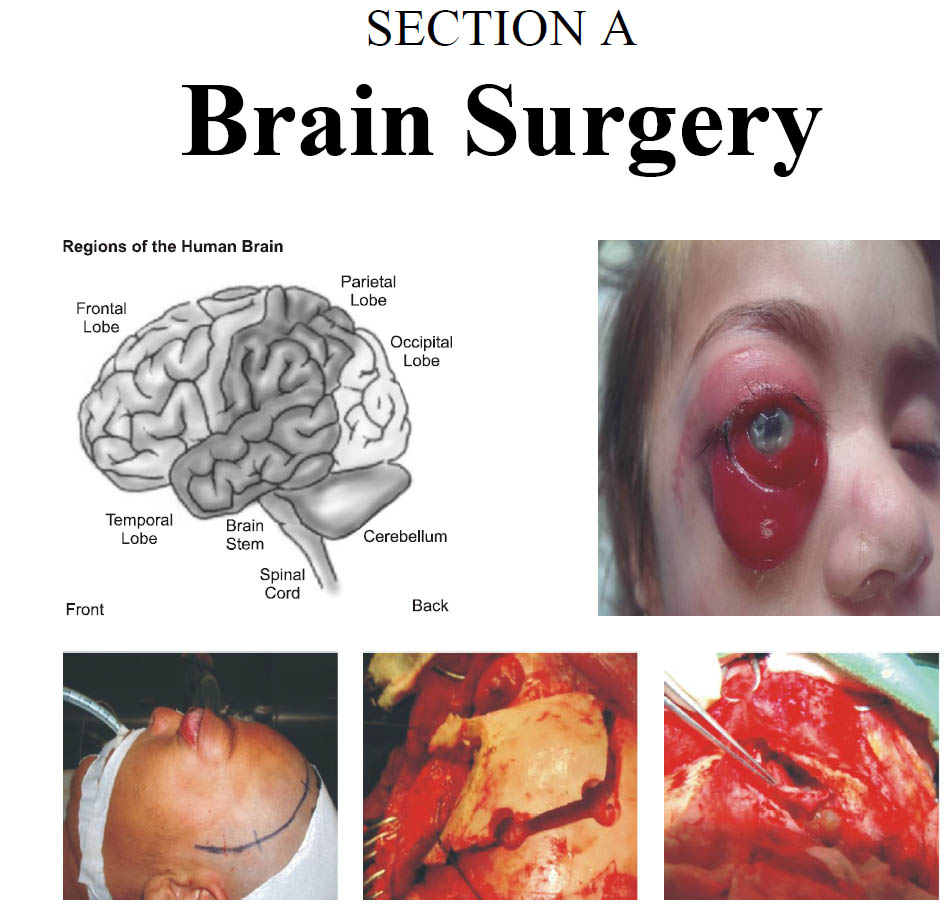Community Awareness Level Regarding Brain Tumours and Reasons of Delay in Total Diagnostic Interval
Keywords:
Brain tumors, community awareness, Total Diagnostic IntervalAbstract
Objectives: This study was conducted to determine the awareness in the Pakistani community regarding Brain tumors and exploring the reasons for the delay in Total Diagnostic Interval (TDI).
Material and Methods: The methodology used to determine community level of awareness by anonyms, questionnaire based descriptive study. The duration of the study was 4 months and data was taken from the patients operated in Neurosurgery Unit I of Punjab Institute of Neuroscience (PINS).
Results: A total of 102 patients were recorded, of which sixty five (63.7%) were male patients and thirty seven (36.2%) female patients. Immense delay was noted in getting the first basic radiological investigation, i.e., more than one year in 33 cases (32.35%) after the appearance of their first symptom. The study revealed that 46 cases (45.00%) got treatment from Quack, 38 cases (37.00%) from spiritual healer/Hakeems and 8 cases (07.00%) had homeopathic treatment. It was noted that 35 (34.30%) of the patients were unaware of their disease, and 67patients (65.00%) were aware of their disease. The awareness group revealed that 28 cases (27.45%) know about their disease, but reluctant to get surgery, while 30 cases (29.00%) were considered quacks treatment. Seventy five cases (73.52%) presented after 12 weeks of their initial symptom in our series.
Conclusion: Awareness regarding brain tumors is insufficient that is resulting in delay of Total Diagnostic Interval, moreover the scenario was further complicated by adopting alternative methods of treatment like Hakeems/quacks/homeopathic and spiritual healers.
References
2. Comelli I, Lippi G, Campana V, Servadei F, et al. Clinical presentation and epidemiology of brain tumors firstly diagnosed in adults in the Emergency Department: a 10-year, single center retrospective study. ATM. 2017; 139 (5): 1-5.
3. Shahbaz U. Brain Tumour: Types, symptoms and research in Pakistan August 11, 2018 Brain Tumour, 2019; 01-09. Available at:
https://www.technologytimes.pk/brain-tumour-types-symptoms-research-pakistan/
4. Davies E, Clarke C. Early symptoms of brain tumours. Bmj. JNNP.2004; 75 (8).
5. William H, David K; Clinical features of primary brain tumours: a case–control study using electronic primary care records.Br J Gen Pract. 2007; 57 (542): 695–699.
6. Schmidt-Hansen M, Berendse S, Hamilton W. Symptomatic diagnosis of cancer of the brain and central nervous system in primary care: a systematic review. Fam Pract. 2015 Dec; 32 (6): 618-23.
7. Chen CH, Sheu J, Lin YC, Lin HC et al. Association of migraines with brain tumors: a nationwide population-based study. J Headache Pain, 2018; 15; 19 (1): 111.
8. Rogers EK, Cannon A, Zaborowski K, Paul SP. Early recognition and management of brain tumours in children. Nurs Stand. 2016; 31; 31 (1): 42-9.
9. Walker D, S Wilne S, Grundy R, et al. Community awareness in Brain Tumours, Head Smart: Be Brain Tumour Aware Children's Brain Tumour Research Centre, Queen's Medical Centre, University of Nottingham, Nottingham, UK (D.W.) Neuro Oncol. 2016; 18 (3): 445–54.
10. Aggarwal A, Herz N, Campbell P, Arkush L, Short S, Rees J. Diagnostic delay and survival in high-grade gliomas - evidence of the 'waiting tim; paradox'? Br J Neurosurg. 2015; 29 (4): 520-3.
11. Bondy ML, Scheurer ME, Malmer B, et al. Brain Tumor Epidemiology: Consensus from the Brain Tumor Epidemiology Consortium (BTEC)” Supplement: 60th Anniversary Edition of Cancer, 2008; 113 (7): 1953-68.
12. Patel V, Neil L, Sarah R: Diagnostic delay and morbidity of central nervous system tumors in children and young adults: a pediatric hospital experience. J Neuro-Oncology, 2019: 1–8.
13. Deye, N., Vincent, F., Michel, P., et al. A questionnaire study on the knowledge, attitude, and the practice of pharmacovigilance among the healthcare professionals in a teaching hospital in South India. Perspect Clin Res. 2015; 6 (1): 45–52.
14. W. MD, R.M. M. The benefit of community engagement in public health and palliative care services for children with cancer in low resource settings. Pediatric Blood and Cancer, 2014; 61: S397.
15. Walter FM, Penfold C, Joannides A, et al;Missed opportunities for diagnosing brain tumours in primary care: a qualitative study of patient experiences. Br J Gen Pract. 2019; 69 (681).
16. Strauser D, Wagner S; A view of career development and community integration from the parent and young adult brain tumor survivor's perspective. Journal of Cancer Survivorship. 2018; 13 (1): 28.

Downloads
Published
Issue
Section
License
The work published by PJNS is licensed under a Creative Commons Attribution-NonCommercial 4.0 International (CC BY-NC 4.0). Copyrights on any open access article published by Pakistan Journal of Neurological Surgery are retained by the author(s).












